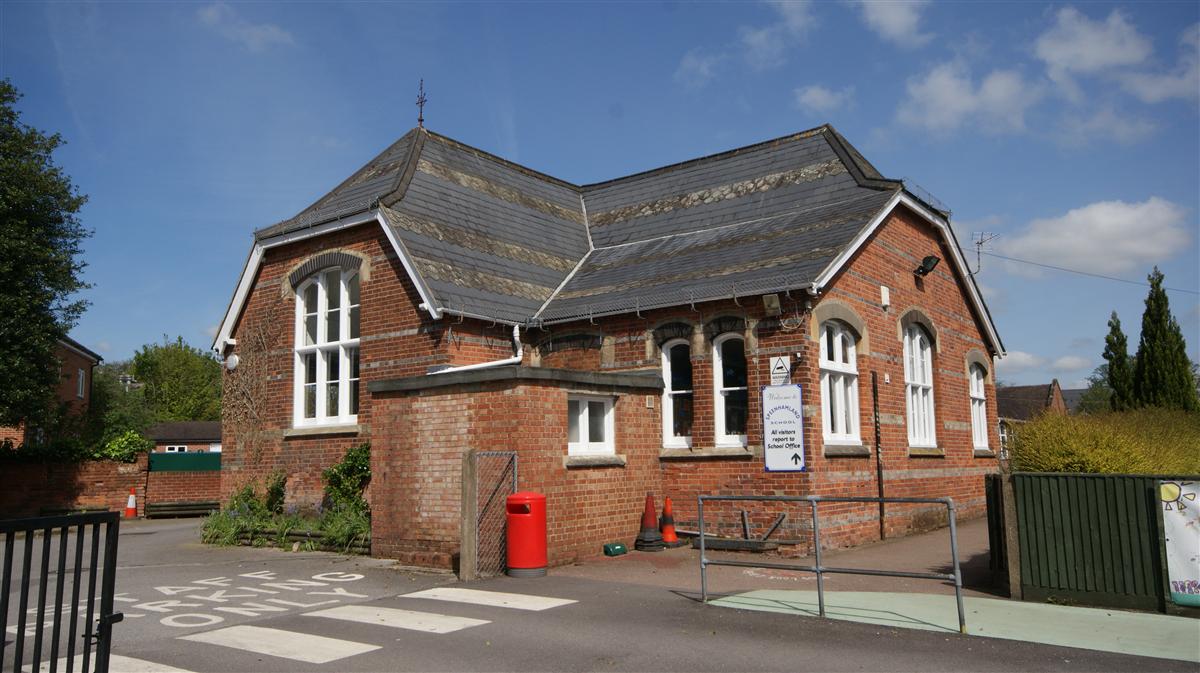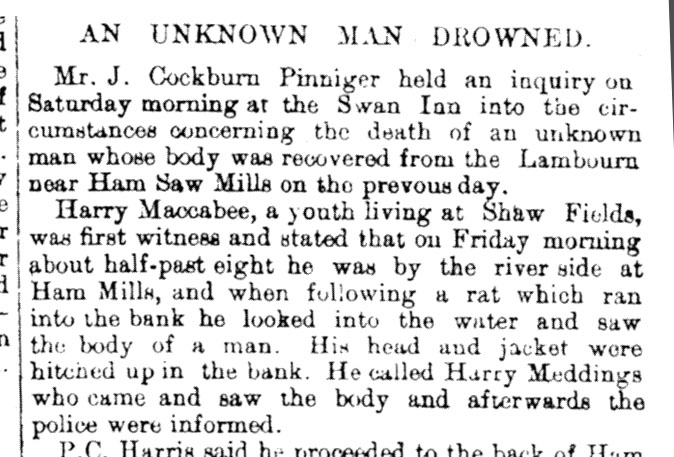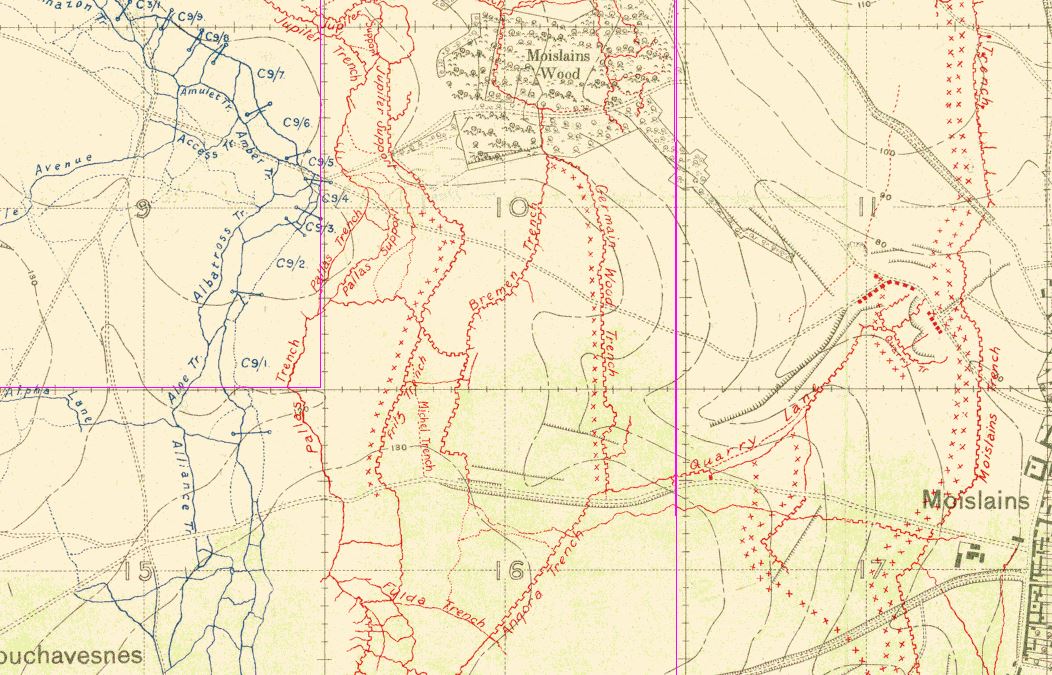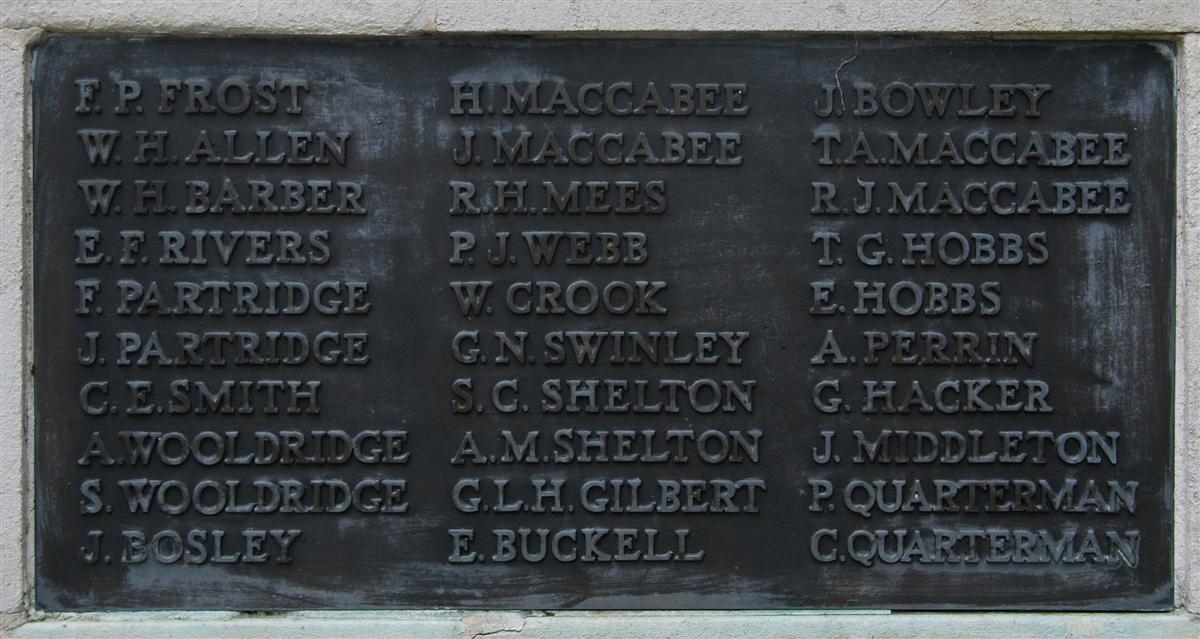Harry Haines Maccabee
Lance-Corporal 7941 Harry Maccabee, 1st Battalion, Royal Berkshire Regiment

Speenhamland Infants' School. Harry would have started his education here. |
His schooling would have ended at the age of 13 after which he would have found work, but there is no record of this employment.

Inquest report in the Nebwury Weekly News. |
Soon after, on 12 February 1904, young Harry (5ft 3in tall, fresh complexion, blue eyes, brown hair) enlisted into the Royal Berkshire Regiment. On enlistment he claimed to be aged 17 years 6 months but at a later date his attestment form was altered to change his ‘apparent age’ to his actual age of 16 years 6 months. At either of these ages he would have joined as a drummer boy or similar until he was 18 and could sign on as an adult – which he obviously did since the 1911 census found him in India, serving with the 2nd Battalion of the regiment.
By the time war broke out in 1914 Harry had left the army after serving seven years beyond his eighteenth birthday (the one he gave the army) with the colours. However, he remained a member of the Army Reserve for a further five years. On 5 August 1914 the Reserve was mobilised to supplement the Regular troops in UK based battalions, many of which were preparing to go to France with the British Expeditionary Force (BEF). Harry’s old battalion was still in India so he was sent to join the 1st Battalion, Royal Berkshire Regiment, then stationed at Aldershot. Harry responded quickly to the call, he was among the first 138 fit reservists to join the battalion by 6 August - the only reservists to cross to France with the battalion overnight on 12/13 August. More would soon follow.
The battalion was one of four in the 6th Brigade, 2nd Division, I Corps and hence was under the command of Lt General Sir Douglas Haig who commanded I Corps one of the two Corps that made up the British Expeditionary Force under Field Marshall Sir John French.
The 2nd Battalion returned from India and became a part of 25th Brigade, 8th Division, which landed in France on 5 November 1914, in the middle of the 1st Battle of Ypres.
At some point Harry switched from the 1st Battalion to his old battalion; such changes usually came about as a result of a break in service – often caused by sickness or wounds, both of which were commonplace in war time.
By early 1917 he was with the 2nd Battalion, a member of C Company’s machine gun section. Although the Battle of the Somme was over, ended by the onset of winter, the spring saw signs of its continuance. In reality the activity along this front did not end until the germans withdrew to new lings (the infamous Hindenburg Line) in mid March 1917. On the night of 2/3 March Harry's battalion relieved the 1st Battalion, The Royal Irish Rifles in trenches near Bouchavenses, north of Peronne; a little over 24 hours later the Berkshires took part on an assault on two enemy trenches:
War Diary, 2nd Battalion, Royal Berkshire Regiment - 4th March 1917
On the morning of 4th March the Battalion formed the Right Flank of the Assaulting Force, and attacked PALLAS and FRITZ trenches. For the report of operations on 4th and 5th March see Appendix I attached. Casualties - killed 2 Lieut J.A. NEALON, 2 Lieut J.A. GRAY, 2 Lieut G.H. PARSONS and 43 O.R. Died from wounds - 11 O.R. Wounded - Captain A.A.H. HANBURY-SPARROW DSO, T/Captain W.B. SCOBELL, Lieut B. HAYE, 2 Lieut H.S. GUNSON, 2 Lieut E.G. FAULKNER-SMITH, 2 Lieut P.D. HARRISON and 173 O.R. Missing 20 O.R.

The German defences look formidable on a map, on the ground Fritz trench was barely discernable. Many men advanced into Bremen Trench before realising their mistake. (click map for enlarged view). |
To be informed that a loved one was missing in action was in many ways worse than a clear cut announcement that they were dead. The missing who survived as prisoners of war would usually be in contact within a few weeks, but it would be six months or a year before the War Office would officially presume that your son, husband or brother had died. Meanwhile every chance was taken in the desperate hope that they had been taken prisoner, perhaps badly wounded (otherwise they would surely write) or even suffering from amnesia. The wealthy would even resort to private investigators operating in Germany, often charlatans whose only intention was to extract cash from the desperate relatives. In reality the best hope was the Red Cross, who monitored the well being of prisoners on both sides of the conflict. Enquiries from family members would be advertised in regular lists:
Red Cross Enquiry List - 1 Aug 1917
R Berks: 2 Bat C Coy MGS Maccabee L-Cpl H 7841
There was no response; Harry had died during the battle. His remains were never identified so he has no named grave. His name is remembered on Pier and Face 11 D of Lutyen’s immense Thiepval Memorial to the missing of the Somme.

Harry's name on Newbury War Memorial (top centre) |
Locally Harry is remembered on tablet 2 of the Newbury Town War Memorial and the village memorial in Cold Ash. He was also among those names on the memorial tablet placed into his old school at Speenhamland.
The Speenhamland School memorial also commemorates a John Maccabee, and the Newbury memorial a J Maccabee – these are believed to be Harry’s brother and to have been included in the mistaken belief that he had perished. However, there is also a possibility that ‘John’ was a mistake and it should have been James – Edwin James Maccabee (not a close relative) who died in Flanders in 1917 – for more on this mystery click here.

